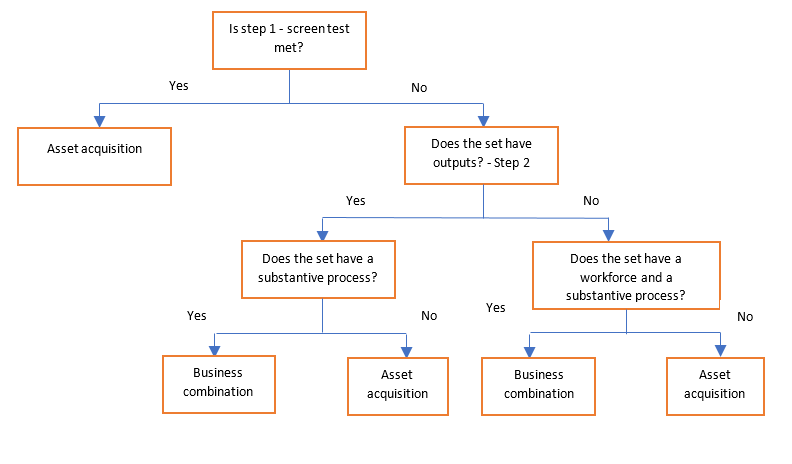In January 2018 public companies, and in January 2019, all companies will have to apply the new definition of a business (Update No. 2017-01; ASC 805). The new guidance includes a two-step process which will simplify the legacy application guidance which deemed to be too broad, resulting likely in less transactions being accounted for as business combinations under the new model.
The new model requires an entity to firstly assess whether substantially all the fair value of the gross assets acquired is concentrated in a single identifiable asset or group of similar identifiable assets, and if the screen test is met, the set is not a business.
If the screen test is not met, an entity would need to apply the second step, which encompasses to determine whether an entity has acquired at least a substantive process.
Determining whether a substantive process requires judgment and the analysis would vary depending on whether the acquired set generates or nor outputs.
If a set is not generating outputs, the set will have both an input and a substantive process that together significantly contribute to the ability to create outputs only if it includes both: a) employees that form an organized workforce that provides access to a workforce that has necessary skills, knowledge, or experience to perform an acquired process (or group of processes) that when applied to an acquired input or inputs is critical to the ability to continue producing outputs; and b) an input that the workforce could develop or convert into output.
If the set is generating outputs, before and after the transaction, and includes any of the following, then the set would include at least a substantive process and therefore, the set acquired would be a business.
- Employees that form an organized workforce or an acquired contract that provides access to a workforce that has necessary skills, knowledge, or experience to perform an acquired process (or group of processes) that when applied to an acquired input or inputs is critical to the ability to continue producing outputs
- An acquired process (or group of processes) when applied to an acquired input or inputs significantly contributes to the ability to continue producing outputs and cannot be replaced without significant cost, effort, or delay in the ability to continue producing outputs.
- The acquired process (or group of processes) when applied to an acquired input or inputs significantly contributes to the ability to continue producing outputs and is considered unique or scarce.
The following chart flow depicts the model described above:

For questions or for more information, please contact Manda Dinkel at [email protected]


